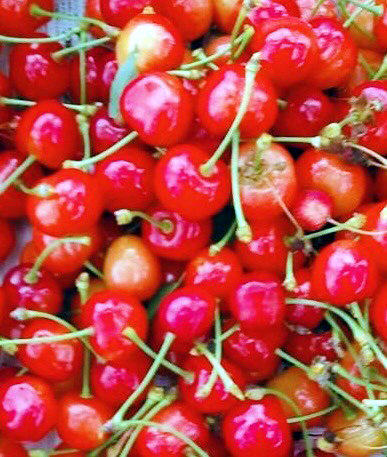
I received a thank-you message for the cherries I gave to my grandchildren. If you make a reservation application around May, it will be sent directly from the production area at the time of harvest. The production area is Yamagata Prefecture, and it is said that the harvest of cherries will reach its peak from June 19th to 22nd for “Sato Nishiki” and from June 29th to July 2nd for “Benishuho”. It looks cute and the name “cherry” is good. It is undeniable that this tend to fall in love with cherries and want to give them to my grandchildren. I looked it up. When cherries were first introduced in Japan in the early Meiji era, they were called Ohtoh. The name Ohtoh also appear in the poems of famous Tang dynasty poets Wang Wei and Du Fu. At the beginning of the Edo period, when Yusuraume ( Nanking cherry) was introduced from China to Japan, the character of ohtoh was applied, and it was also used for Western cherries introduced in the Meiji era. At the beginning of the Showa era, a newspaper company in Tokyo described it as “Sakuranbo”, and it seems that it has gradually taken root and continues to this day.
孫たちに贈ったさくらんぼのありがとうメッセージが届きました。5月くらいに予約申込みをしておいたら、収穫時期になると産地から直送してくれるのです。産地は山形県で、さくらんぼの収穫は「佐藤錦」が6月19日から22日ごろ、「紅秀峰」が6月29日から7月2日ごろに最盛期を迎えるそうです。見た目にも可愛らしいし、この「さくらんぼ」と言うネーミングがいい。こちらが惚れ込んで孫たちに贈るきらいがないではありません。調べてみました。さくらんぼが明治初期日本に初めて導入されたときには桜桃と呼ばれていました。桜桃という名前は、唐代の有名な詩人である王維や杜甫の詩の中にも登場します。江戸時代の初め、中国から日本にユスラウメが伝来したときにもこの桜桃の字が当てられ、その後明治になって導入された西洋のチェリーにも使われました。それを昭和の初め、東京の新聞社が「さくらんぼ」と表し、だんだん定着していき、今に至っているそうです。
